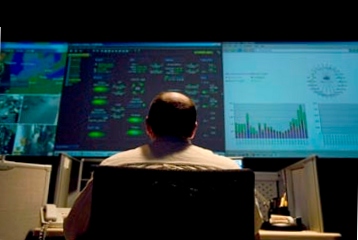Computer network
"Computer networks" redirects here. For the periodical, see Computer Networks (journal).
"Datacom" redirects here. For other uses, see Datacom (disambiguation).
A computer network is atelecommunications network that allowscomputers to exchange data. The physical connection between networked computing devices is established using either cable media or wireless media. The best-known computer network is the Internet.
Network devices that originate, route and terminate the data are called network nodes.[1] Nodes can include hosts such asservers and personal computers, as well asnetworking hardware. Two devices are said to be networked when a process in one device is able to exchange information with a process in another device.
Computer networks support applications such as access to the World Wide Web, shared use of application and storage servers, printers, and fax machines, and use of email and instant messagingapplications. The remainder of this article discusses local area network technologies and classifies them according to the following characteristics: the physical media used to transmit signals, thecommunications protocols used to organize network traffic, along with the network's size, its topology and its organizational intent.
